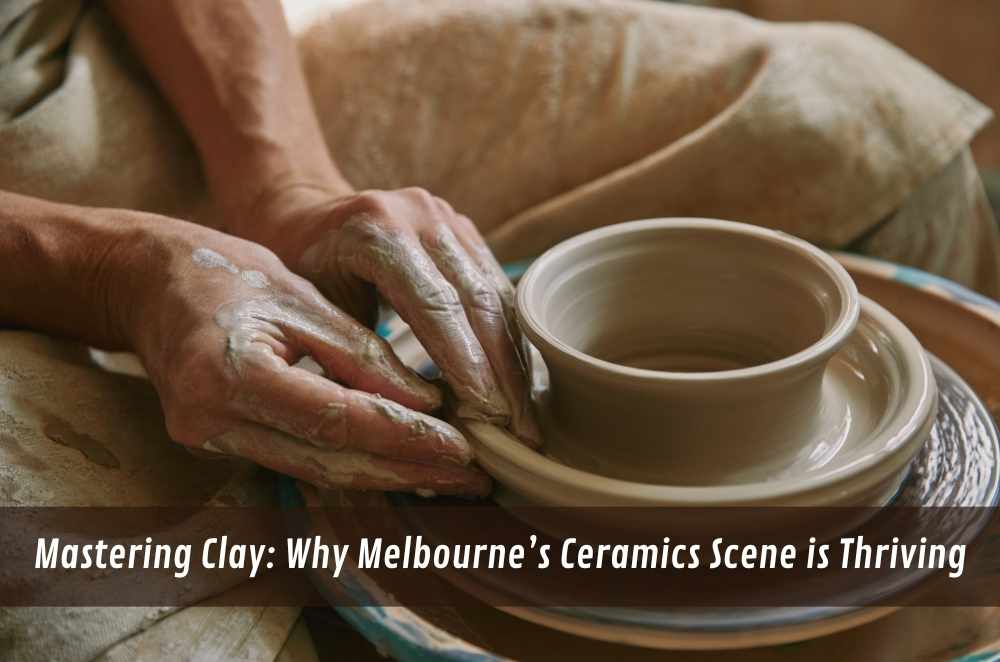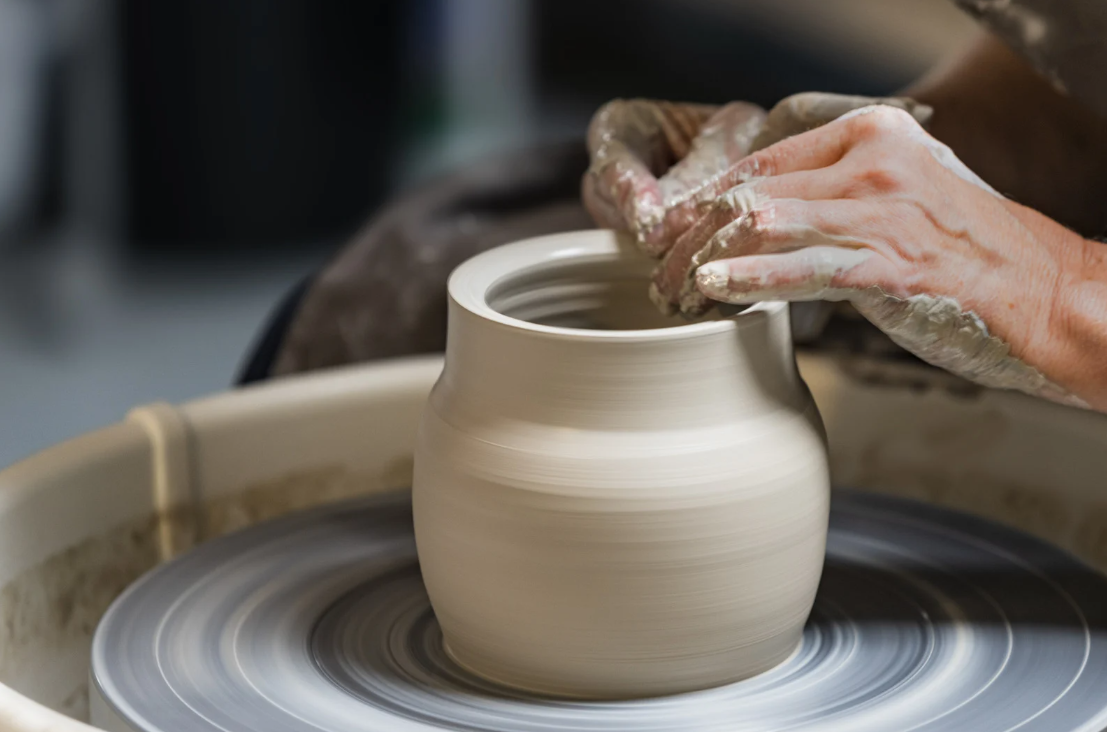
Melbourne’s creative scene has always had its own rhythm — eclectic, expressive, maybe even a little chaotic in the best way. But lately, there’s been a quieter current running through it. One where people, tired of scrolling and swiping, are putting down their devices and picking up clay. Signing up for a pottery class has become more than a pastime; it’s a hands-on return to something tactile, slower, and more honest.
When I stumbled into my first session, I wasn’t chasing artistry. I just wanted to get out of my head for a bit. But the moment my hands touched the wheel, something shifted. There was no pressure to perform, just space to explore. That shift is what’s drawing people in — the idea that you can shape something with your hands and, along the way, reshape the way you feel about time, process, even imperfection.
The return to tactile creativity
It’s not a coincidence that so many people are craving materials like clay, wood, or fabric these days. There’s a collective pull back to the physical, away from polished screens and into imperfect textures. Ceramics hits that sweet spot between focused craft and freeform play.
When you’re throwing a pot, it’s not just your hands working. Your attention, patience, and intuition all get involved. That kind of full-body focus doesn’t happen often in modern life. It’s what makes these workshops feel almost meditative.
In Melbourne, you’ll find a wide variety of studio spaces catering to different temperaments and interests. Some are tucked into old warehouses, filled with natural light and shelves of half-done experiments. Others lean more formal, with clearly outlined curricula and glazed chemistry lessons.
What makes this local scene thrive isn’t just the classes themselves — it’s the philosophy that underpins them. Here are a few things you’ll notice:
Emphasis on creative freedom over technical perfection
Teachers who treat mistakes as part of the process
Inclusive atmospheres that welcome absolute beginners
Shared spaces that spark casual connection and collaboration
Whether you're sculpting your first pinch pot or just trying to unwind after work, there's a space for you.
Creative engagement is rising across Australia
This isn’t just a Melbourne thing. Across the country, more people are leaning into hands-on, expressive work. Recent data on arts participation in Australia shows a noticeable rise in individuals choosing to make rather than consume.
The why isn’t hard to figure out. We’ve all spent so long in passive modes — watching, reading, liking — that active creativity now feels like a relief. Pottery, especially, rewards patience and shows progress in tangible ways. You leave each session with something in your hands — even if it’s lopsided, it’s yours.
What I’ve seen in classes echoes that broader shift. People arrive hesitant and leave hooked. There’s no blueprint for success in ceramics — it’s as much about the act as the outcome.
What to consider before enrolling in a workshop
Studios can vary widely — not just in format, but in tone. And that tone can make or break the experience, especially if you're new. Some classes run like miniature art schools, with critiques and structured modules. Others feel more like communal therapy with clay.
When I first started, I walked into a class that was too advanced for me. The instructor was talented but hands-off, and I spent most of the time confused, just trying not to ruin the communal tools. It wasn’t until I found a smaller, more beginner-friendly space that I really started to enjoy it.
One reflection on choosing a pottery workshop highlighted something I hadn’t really articulated before: the importance of pacing. Some students want direction and feedback. Others — like me — just need room to explore without judgment. That distinction matters more than you think.
If you're in the market for a class, consider:
What level of guidance are you comfortable with
Whether you prefer working alone or in groups
How much emphasis is placed on technique vs expression
If you’re happy to commit to a term, or want to drop in casually
There's no one-size-fits-all, and that’s actually a good thing.
How clay supports emotional balance
There’s something about working with clay that feels like it resets your system. Maybe it’s the mess, maybe it’s the patience it demands — whatever the cause, the effect is consistent. People walk into the studio full of noise and walk out quieter, steadier.
Even if you’re not someone who considers themselves “creative,” the tactile feedback of ceramics has a way of drawing you in. It’s grounding. Repetitive without being dull. In some ways, it’s a permission slip to focus on something small and specific for a while, and that alone can be healing.
The emotional benefits of pottery seem to unfold over time. At first, it might just feel like a fun distraction. But eventually, you realise that shaping clay has helped you build a stronger relationship with yourself — one that accepts wobbles, cracks, and unexpected outcomes.

Final thoughts: community, creativity, and calm
Melbourne’s pottery scene isn’t just surviving — it’s blooming. That growth isn’t driven by marketing or momentary trendiness, but by something more enduring: the need to make meaning with our hands.
In every studio I’ve visited, I’ve met people carving out time from busy lives just to sit, focus, and try. There’s no big payoff, no fast results — just slow, steady progress that feels rare these days. It’s one of the few places where it’s okay not to be “productive,” and where success is measured in presence, not output.
I’ve watched strangers become friends over clay-covered tables, seen quiet people find their voice through the rhythm of the wheel. There’s an openness in these spaces that’s hard to come by elsewhere. It’s honest, a little messy, and wonderfully grounding.






Write a comment ...